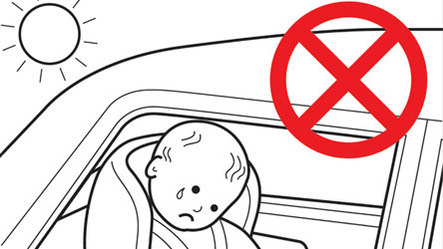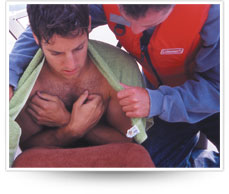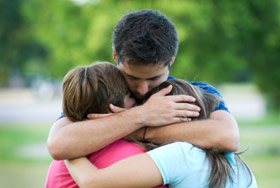 The effects of a disaster, terrorist attack, or other public health emergency can be long-lasting, and the resulting trauma can reverberate even with those not directly affected by the disaster. This page provides general strategies for promoting mental health and resilience that were developed by various organizations based on experiences in prior disasters.
The effects of a disaster, terrorist attack, or other public health emergency can be long-lasting, and the resulting trauma can reverberate even with those not directly affected by the disaster. This page provides general strategies for promoting mental health and resilience that were developed by various organizations based on experiences in prior disasters.
Category: Safety
The Dangers of Mixing Cleaning Products
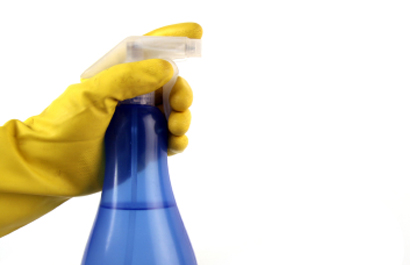 It is no surprise that mixing cleaning chemicals can be a deadly business. But why exactly is it so dangerous, and what specifically should not be mixed? The main cleaner that can NOT be mixed with other cleaning agents is chlorine bleach. The active ingredient in bleach is sodium hypochlorite, which can be corrosive to the skin and mucous membranes and can even cause severe injury to the eyes. Chlorine bleach is basically chlorine gas in water. When it is mixed with other chemicals, deadly gases can be produced.
It is no surprise that mixing cleaning chemicals can be a deadly business. But why exactly is it so dangerous, and what specifically should not be mixed? The main cleaner that can NOT be mixed with other cleaning agents is chlorine bleach. The active ingredient in bleach is sodium hypochlorite, which can be corrosive to the skin and mucous membranes and can even cause severe injury to the eyes. Chlorine bleach is basically chlorine gas in water. When it is mixed with other chemicals, deadly gases can be produced.
Don’t Leave Children in a Hot Car
Stay Safe at Work
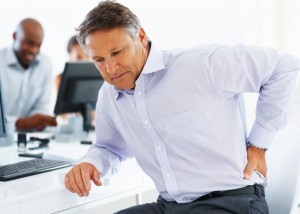 If work isn’t performed safely, it can put a lot of wear and tear on your body. Back injuries are the most common type of workplace injury.
If work isn’t performed safely, it can put a lot of wear and tear on your body. Back injuries are the most common type of workplace injury.
Make simple changes to prevent injuries and stay healthy:
- Lift things safely.
- Arrange your equipment to fit your body.
- Take short breaks and stretch your muscles.
- Eat a healthy diet and stay active.
- Watch your weight.
- Get enough sleep.
via Workplace Safety.
Cold Water Danger: Hypothermia
Hypothermia is a physical condition that occurs when the body’s core temperature falls below a normal 98.6° F (37° C) to 95° F (35° C) or cooler. Think of hypothermia as the opposite of heat stroke. Cold water dangerously accelerates the onset and progression of hypothermia since body heat can be lost 25 times faster in cold water than in cold air. Hypothermia affects the body’s core – the brain, heart, lungs, and other vital organs. Even a mild case of hypothermia diminishes a victim’s physical and mental abilities, thus increasing the risk of accidents. Severe hypothermia may result in unconsciousness and possibly death. About 600 people in the U.S. die of hypothermia each year.
via Hypothermia Prevention: Survial in Cold Water | Minnesota Sea Grant.
Enforcement of Workplace Safety and Health
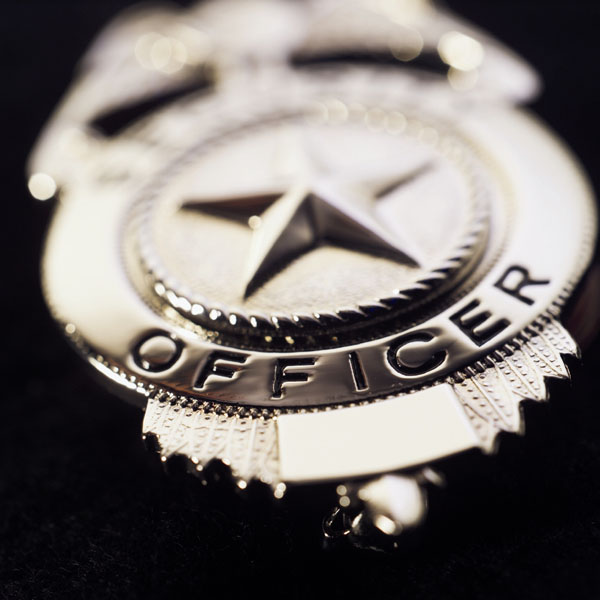 Three Department of Labor (DOL) agencies have responsibility for the administration and enforcement of the laws enacted to protect the safety and health of workers in America.
Three Department of Labor (DOL) agencies have responsibility for the administration and enforcement of the laws enacted to protect the safety and health of workers in America.
Occupational Safety and Health Administration
- OSHA administers the Occupational Safety and Health (OSH) Act.
- Safety and health conditions in most private industries are regulated by OSHA or OSHA-approved state systems.
- Nearly every employee in the nation comes under OSHA’s jurisdiction with some exceptions such as miners, some transportation workers, many public employees, and the self-employed.
- Employers subject to the OSH Act also have a general duty to provide work and a workplace free from recognized, serious hazards.
Mine Safety and Health Administration
- DOL’s MSHA has responsibility for administration and enforcement of the Mine Safety and Health Act of 1977, which protects the safety and health of workers employed in the nation’s mines.
- The Act applies to all mining and mineral processing operations in the United States, regardless of size, number of employees, or method of extraction.
The Fair Labor Standards Act
- FLSA contains rules concerning the employment of young workers, those under the age of 18, and is administered and enforced by DOL’s Wage and Hour Division. Intended to protect the health and well-being of youth in America, the FLSA contains minimum age restrictions for employment, restrictions on the times of day youth may work, and the jobs they may perform.
via U.S. Department of Labor — Find It By Topic — Workplace Safety & Health.
Tips to Safety at Work
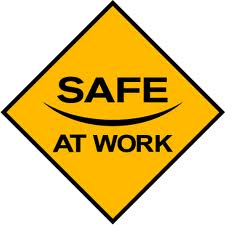 Here are a few tips to stay safe at work.
Here are a few tips to stay safe at work.
- Safety is a team effort. Ensure that every member of the crew knows the safety requirements before the job is started.
- Safety is your responsibility.
- Always communicate with co-workers during a job in order to maintain safety.
- Don’t create unnecessary hazards. Notify others of both new and old ones.
- Never take shortcuts. Always follow correct procedures.
- Wear metal mesh gloves to protect your hands when using sharp knives regularly.
- Keep your work area clean and orderly.
- If you make a mess, clean it up. Never let safety be someone else’s job.
- Keep access clear to emergency exits, equipment, and equipment shutoffs.
- Prevent accidents by clearly identifying any hazards that cannot be removed.
Follow Safe Grilling Tips
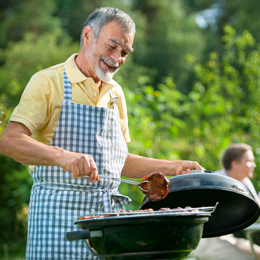 Grilling and picnicking often go hand-in-hand. And just as with cooking indoors, there are important guidelines that should be followed to ensure that your grilled food reaches the table safely.
Grilling and picnicking often go hand-in-hand. And just as with cooking indoors, there are important guidelines that should be followed to ensure that your grilled food reaches the table safely.
- Marinate safely. Marinate foods in the refrigerator – never on the kitchen counter or outdoors. In addition, if you plan to use some of the marinade as a sauce on the cooked food, reserve a portion separately before adding the raw meat, poultry, or seafood. Don’t reuse marinade.
- Cook immediately after “partial cooking.” If you partially cook food to reduce grilling time, do so immediately before the food goes on the hot grill.
- Cook food thoroughly. When it’s time to cook the food, have your food thermometer ready. Always use it to be sure your food is cooked thoroughly.
- Keep “ready” food hot. Grilled food can be kept hot until served by moving it to the side of the grill rack, just away from the coals. This keeps it hot but prevents overcooking.
- Don’t reuse platters or utensils. Using the same platter or utensils that previously held raw meat, poultry, or seafood allows bacteria from the raw food’s juices to spread to the cooked food. Instead, have a clean platter and utensils ready at grill-side to serve your food.
- Check for foreign objects in food. If you clean your grill using a bristle brush, check to make sure that no detached bristles have made their way into grilled food.
Keep Kids Safe Around the Campfire
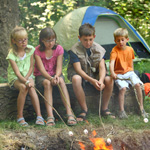 The warmth, light and smells of an outdoor campfire make it an especially memorable activity for children. Anyone who has ever told ghost stories or roasted marshmallows outdoors knows how much fun it can be. While you enjoy the campfire, always keep watch over the site and never let children alone while the fire is burning. Use long sticks or skewers to roast frankfurters or marshmallows. Do not allow any running or roughhousing near the fire.
The warmth, light and smells of an outdoor campfire make it an especially memorable activity for children. Anyone who has ever told ghost stories or roasted marshmallows outdoors knows how much fun it can be. While you enjoy the campfire, always keep watch over the site and never let children alone while the fire is burning. Use long sticks or skewers to roast frankfurters or marshmallows. Do not allow any running or roughhousing near the fire.
Fireworks Safety Tips
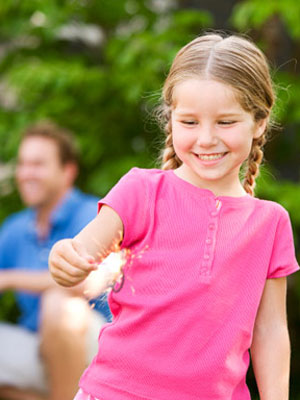 Fireworks can result in severe burns, scars and disfigurement that can last a lifetime.
Fireworks can result in severe burns, scars and disfigurement that can last a lifetime.
Fireworks that are often thought to be safe, such as sparklers, can reach temperatures above 1000 degrees Fahrenheit, and can burn users and bystanders.
Families should attend community fireworks displays run by professionals rather than using fireworks at home.
via Summer Safety Tips.

